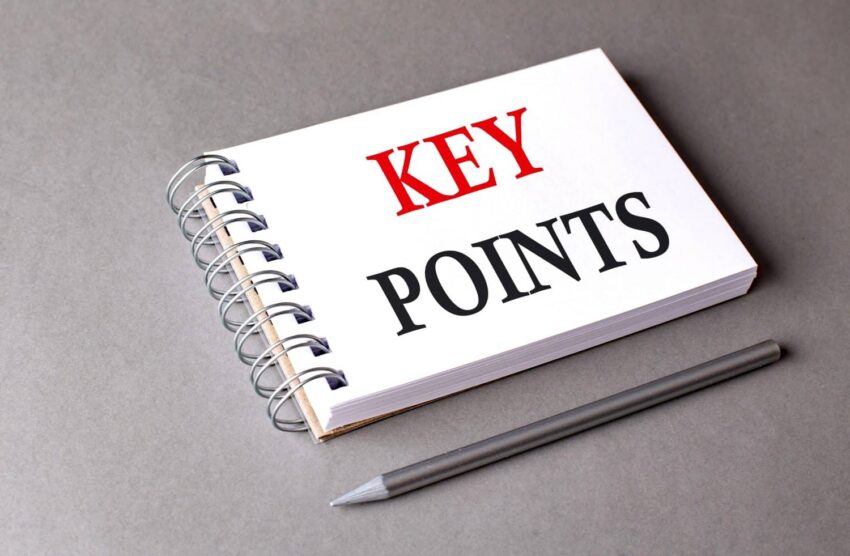Inflation continues to shape how Americans shop, save, and spend. Even as overall prices cool slightly, everyday essentials remain costly. That reality is pushing more people to prepare for the future by stockpiling goods—just in case. About 1 in 5 Americans are now regularly buying more than they need, storing away food, cleaning supplies, and other staples as a hedge against further price hikes or shortages. This article takes a look at what’s driving that behavior, what people are buying, and whether it actually makes sense.
Key Points
Key Points
-
Inflation is driving record numbers of Americans to stock their shelves. But it’s a strategy that could backfire and make hard times even harder.
-
Are you ahead, or behind on retirement? SmartAsset’s free tool can match you with a financial advisor in minutes to help you answer that today. Each advisor has been carefully vetted, and must act in your best interests. Don’t waste another minute; get started by clicking here here.(Sponsor)
Inflation in 2025
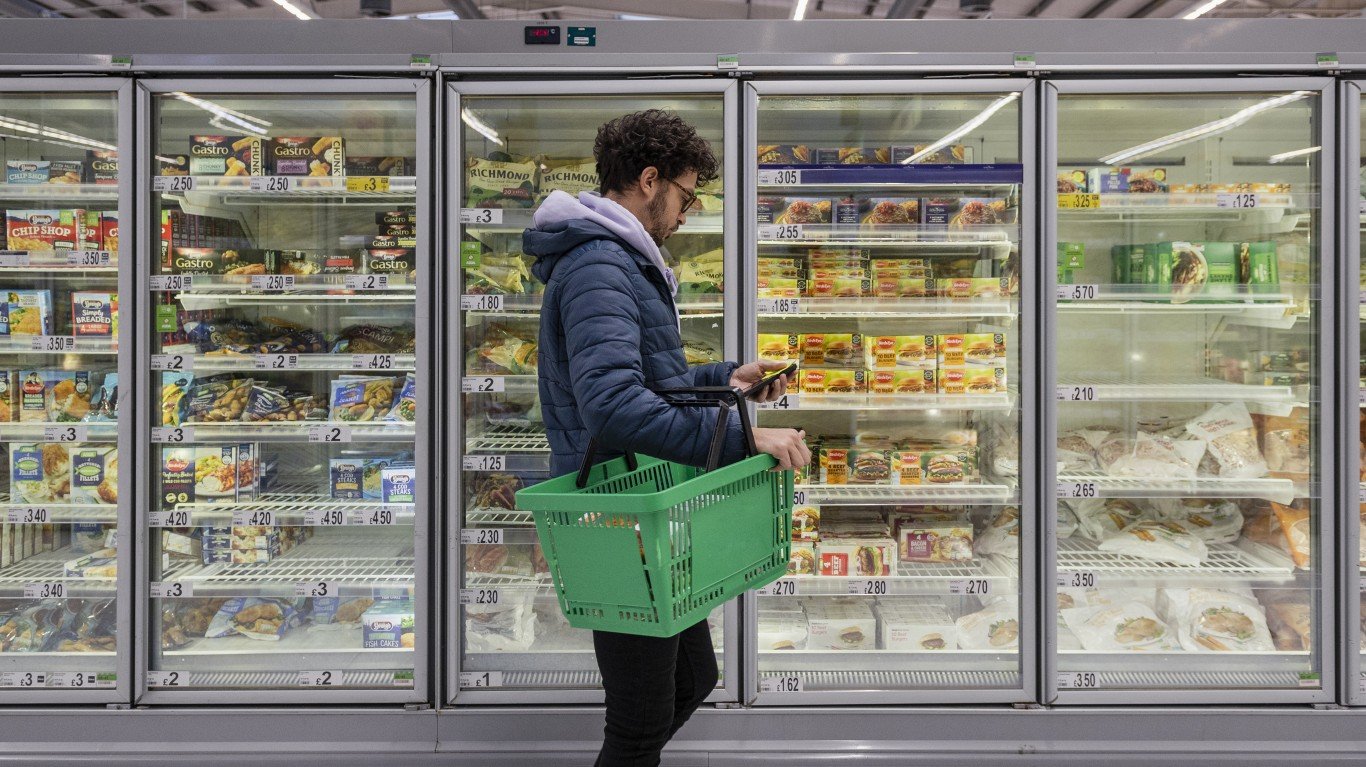
Although inflation has come down from pandemic-era highs, it’s still a heavy factor in everyday decision-making. The annual inflation rate in the United States was about 2.4% for the 12 months ending in May 2025. Official figures for June and July will be released later this month, but projections suggest an annual rate of 2.6%-2.7%. The most essential expenses, like food, shelter, and utilities, continue to rise faster than wages for many families. Since 2020, overall prices have jumped more than 20%, taking a sharp bite out of Americans’ wallets.
Compounding the issue is a new wave of tariffs introduced by the Trump administration. Imports from countries like China, Mexico, and Canada are facing across-the-board increases, with some goods taxed at far higher rates. Analysts project these tariffs could cost U.S. consumers up to $3.1 trillion over the next decade. Retailers rarely absorb these added costs—instead, they’re passed directly to shoppers, making it even harder for inflation to cool in any meaningful way.
The Rise of Stockpiling
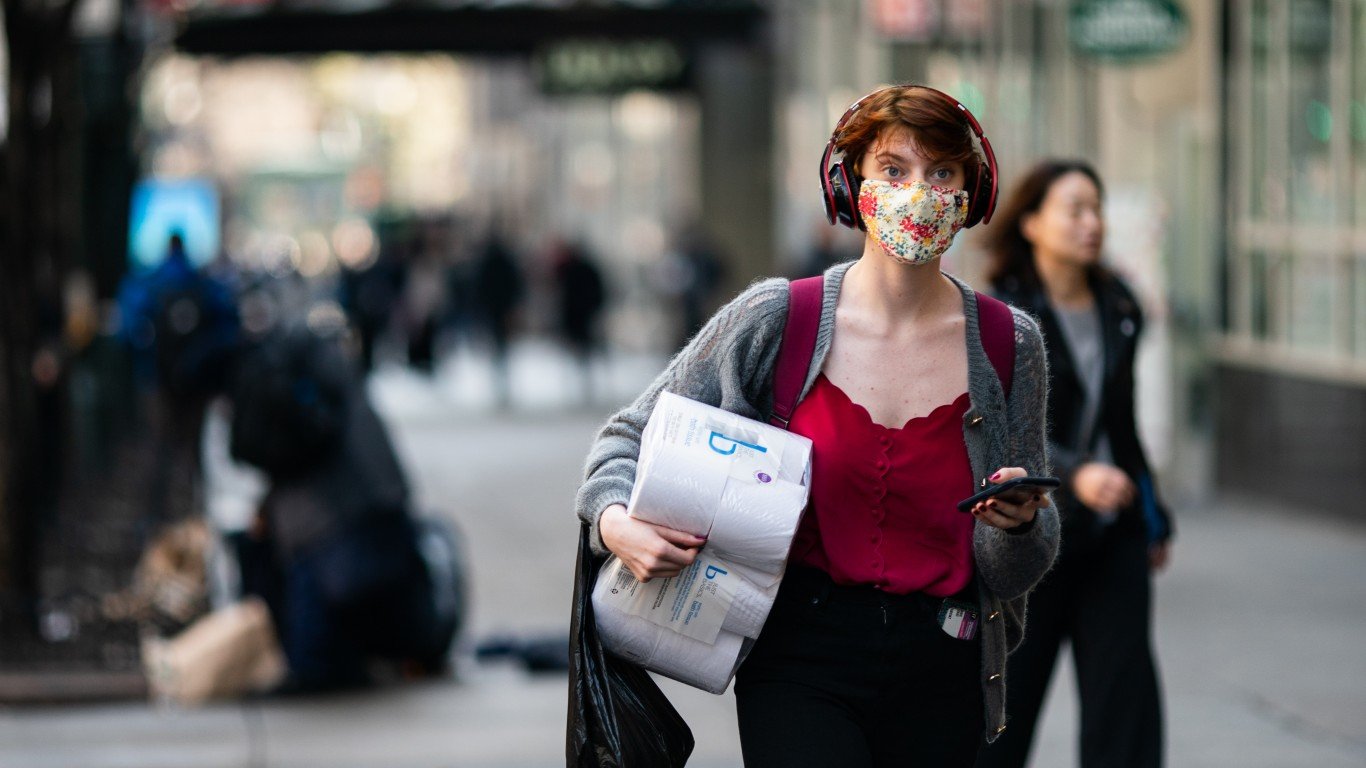
The memory of early pandemic panic buying hasn’t faded. People still remember how fast shelves emptied when supply chains hiccuped and demand surged. But today’s stockpiling is less reactive and more calculated. Surveys show that 19% to 22% of Americans are actively building up reserves, and when those who plan to start are included, the number climbs to nearly 42%. Why the shift? Inflation is the number one personal worry for most Americans, outpacing even concerns about taxes or healthcare. Stockpiling offers a sense of control in a climate of economic uncertainty. For some, it’s about avoiding the stress of future shortages. For others, it’s simply a money-saving strategy: buy now before prices climb again.
Why the Stores Can’t Save You
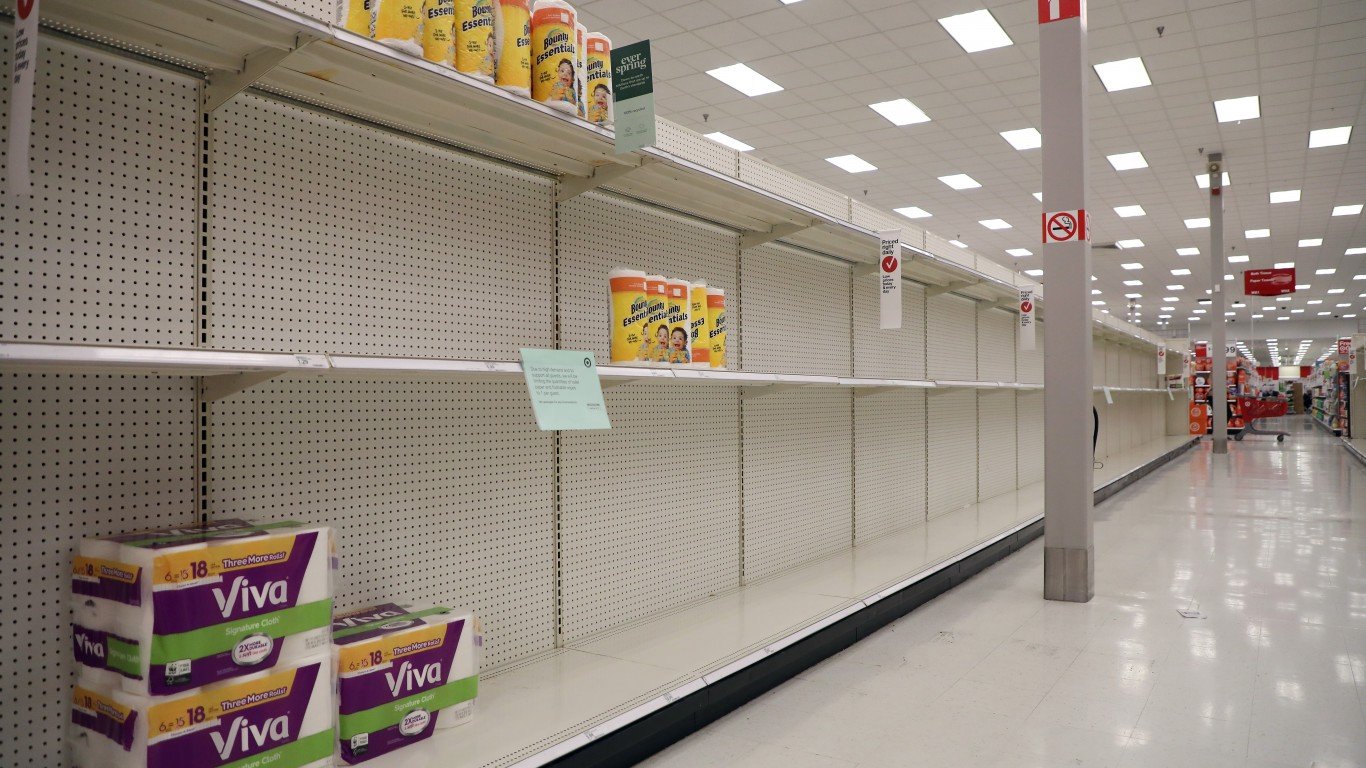
One reason stockpiling has gained traction is that Americans increasingly realize stores aren’t doing it for them. Most modern retailers use “just-in-time” inventory systems that rely on real-time data and sophisticated algorithms. Rather than stockpiling inventory on-site, deliveries are carefully scheduled and coordinated to keep stores continuously stocked. These systems are efficient and cost-effective for the companies that use them, but they’re also fragile. When something disrupts the flow—be it a storm, a labor strike, or a shipping delay—store shelves can empty in hours and take weeks to refill again. That was painfully clear during events like hurricanes or the early days of COVID-19. Consumers now understand that if a crisis hits, they can’t rely on stores to be stocked.
What People Are Buying
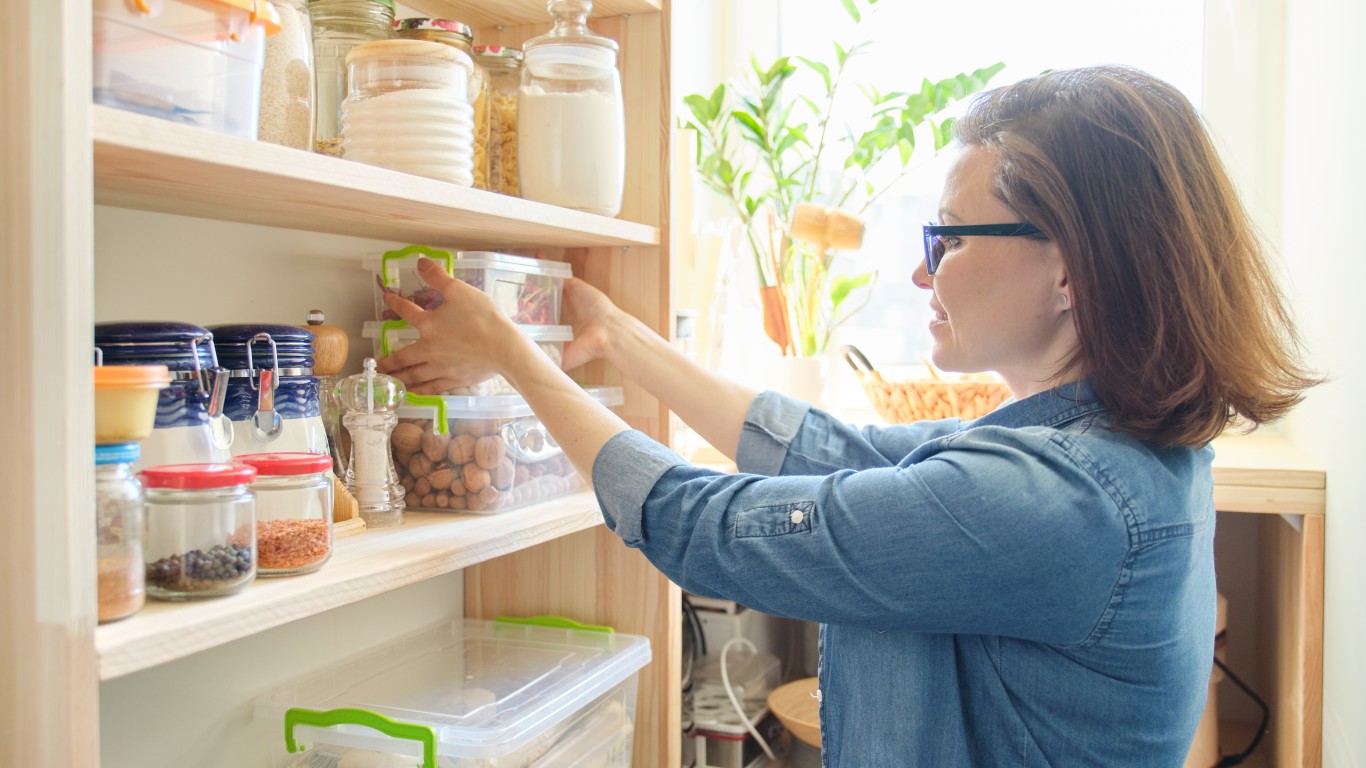
This time around, many Americans are approaching stockpiling with more thought than panic. They’re focusing on goods that are both useful and long-lasting: dry staples like rice, oats, and flour; canned goods that store well for months or years; and basic household supplies like soap, toilet paper, and trash bags. These choices make sense. They’re affordable, used daily, and can be tucked away without spoiling. Personal care items like toothpaste, shampoo, and over-the-counter medications are also smart additions. Pet owners, too, are getting ahead by storing extra pet food and supplies. This kind of stockpiling is practical. It reduces the frequency of shopping trips, offers peace of mind, and can genuinely save money over time—especially if prices continue to rise.
Not all stockpiling is wise, though. Some shoppers fall into the trap of overbuying items they don’t actually need or can’t reasonably store. Perishables like dairy and fresh produce have short shelf lives and often end up in the trash. Freezers can only hold so much, and once full, excess purchases go to waste. Not to mention the fact that all it takes is a power outage during a storm to make a freezer full of half-thawed food go to waste. Other missteps include buying trendy specialty foods or gadgets that aren’t part of a household’s regular routine, or loading up on bulk items that expire long before they can be used. Stockpiling out of fear rather than strategy often leads to clutter, wasted money, and strained budgets. It’s not uncommon for people to find themselves cash-poor because they tied up funds in things they won’t use anytime soon.
Weighing the Pros and Cons

When approached with intention, stockpiling can be a smart strategy. It helps families save money over time, provides a buffer during supply disruptions, and cuts down on last-minute shopping stress. But it’s not without pitfalls. If prices stabilize or fall, you could be stuck with shelves full of goods that no longer offer any real savings. Panic buying can also trigger artificial shortages, putting pressure on the broader community and under-resourced people who cannot afford to hoard. And spending heavily upfront can tie up money you might need for unexpected expenses. There’s also a subtler risk: overuse. When supplies feel abundant, people tend to consume more—eating more food, using products faster, and being less mindful overall. That sense of plenty can lead to waste and undermine the very savings stockpiling was meant to deliver. In the end, the key isn’t just what you buy, but how you manage it once it’s in your home.
Smarter Alternatives to Panic Stockpiling

You don’t have to fill your garage with canned beans to be prepared. Experts suggest a more measured approach. That means buying a little extra of what you already use regularly, rather than chasing bargains on unfamiliar items. Adjusting your household budget to prioritize essentials, building a small emergency fund, and staying informed about inflation and policy changes are all better long-term strategies. Preparation doesn’t have to mean stockpiling—it can also mean planning ahead with your wallet.
At the end of the day, whether or not stockpiling makes sense depends on your situation. If you have the space, the funds, and a clear plan for what you’re buying, it can be a useful buffer against inflation and uncertainty. But excessive or reactive buying may create more stress than it solves. In an economy still adjusting to years of upheaval, financial peace of mind doesn’t always come from spending more—it comes from spending smarter. Stockpile if it helps, but do it with intention. The goal is to stay ahead—not to be overwhelmed.
The post 1 in 5 Americans Are Stockpiling Due to Inflation Concerns. Should You? appeared first on 24/7 Wall St..
Click this link for the original source of this article.
Author: Drew Wood
This content is courtesy of, and owned and copyrighted by, https://247wallst.com and its author. This content is made available by use of the public RSS feed offered by the host site and is used for educational purposes only. If you are the author or represent the host site and would like this content removed now and in the future, please contact USSANews.com using the email address in the Contact page found in the website menu.

